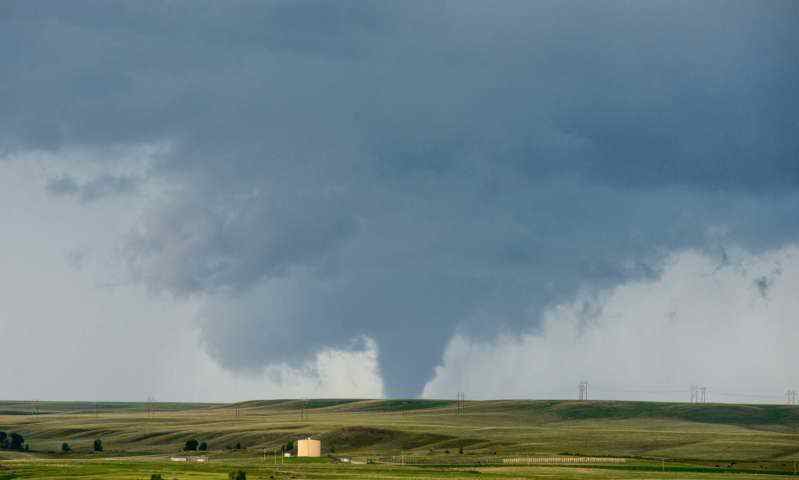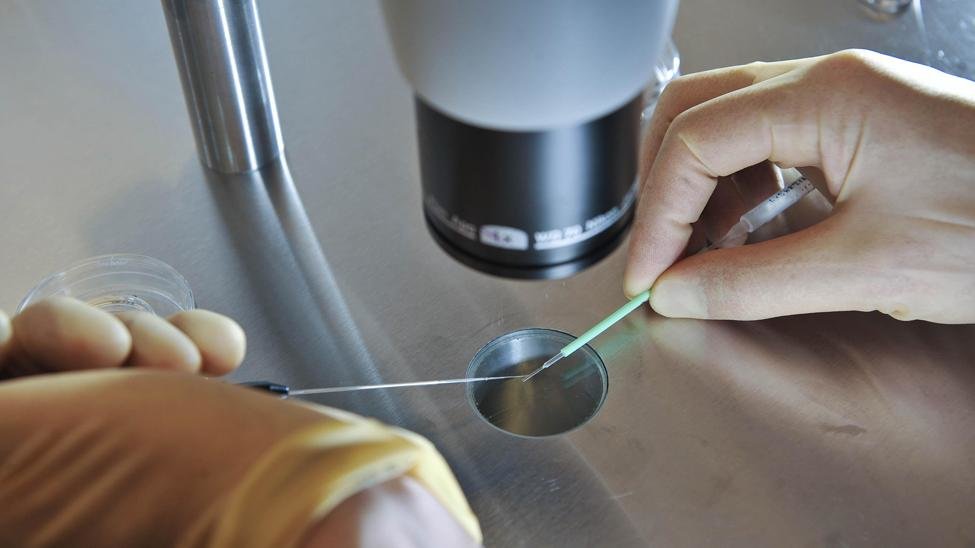
© John Allen/Central Michigan UniversityA tornado near Elk Mountain, west of Laramie Wyoming on the 15th of June, 2015. The tornado passed over mostly rural areas of the county, lasting over 20 minutes.
Tornadoes and severe thunderstorms kill people and damage property every year. Estimated U.S. insured losses due to severe thunderstorms in the first half of 2016 were $8.5 billion. The largest U.S. impacts of tornadoes result from tornado outbreaks, sequences of tornadoes that occur in close succession. Last spring a research team led by Michael Tippett, associate professor of applied physics and applied mathematics at Columbia Engineering, published a study
showing that the average number of tornadoes during outbreaks—large-scale weather events that can last one to three days and span huge regions—has risen since 1954. But they were not sure why.In a new paper, published December 1 in
Science via First Release, the researchers looked at increasing trends in the severity of tornado outbreaks where they measured severity by the number of tornadoes per outbreak.
They found that these trends are increasing fastest for the most extreme outbreaks. While they saw changes in meteorological quantities that are consistent with these upward trends, the meteorological trends were not the ones expected under climate change.
"This study raises new questions about what climate change will do to severe thunderstorms and what is responsible for recent trends," says Tippett, who is also a member of the Data Science Institute and the Columbia Initiative on Extreme Weather and Climate. "The fact that we don't see the presently understood meteorological signature of global warming in changing outbreak statistics leaves two possibilities:
either the recent increases are not due to a warming climate, or a warming climate has implications for tornado activity that we don't understand. This is an unexpected finding."
Comment: The climate scientists have not considered the importance of atmospheric dust loading and the winning Electric Universe model in their research. Such information and much more, are explained in the book
Earth Changes and the Human Cosmic Connection by Pierre Lescaudron and Laura Knight-Jadczyk.
The accumulation of cometary dust in the Earth's atmosphere plays an important role in the increase of tornadoes, cyclones, hurricanes and their associated rainfalls, snowfalls and lightning. To understand this mechanism we must first take into account the electric nature of hurricanes, tornadoes and cyclones, which are actually manifestations of the same electric phenomenon at different scales or levels of power.
Increasing
cometary and volcanic dust loading of the atmosphere (one indicator is the
intensification of noctilucent clouds we are witnessing) is accentuating electric charge build-up, whereby we can expect to observe more
extreme weather and planetary upheaval as well as
awesome light shows and other
related mysterious phenomena.


Comment: The climate scientists have not considered the importance of atmospheric dust loading and the winning Electric Universe model in their research. Such information and much more, are explained in the book Earth Changes and the Human Cosmic Connection by Pierre Lescaudron and Laura Knight-Jadczyk. Increasing cometary and volcanic dust loading of the atmosphere (one indicator is the intensification of noctilucent clouds we are witnessing) is accentuating electric charge build-up, whereby we can expect to observe more extreme weather and planetary upheaval as well as awesome light shows and other related mysterious phenomena.